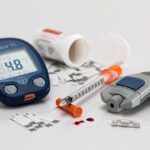
by I Dance With Diabetes | Oct 16, 2022 | Signs & Symptoms
Last night was not a good night for sleep.
I woke up early and couldn’t get back to sleep. As someone creeping towards prediabetes I’m becoming much more aware of the issues surrounding type 2 diabetes. Sleep is one of those issues. What I learned while researching this topic will be reported here. Type 2 diabetes and your sleep will hopefully, answer some of your questions. What I learned while researching this point I’ll in this blog article.
People with diabetes are also at higher risk for sleep-related problems such as insomnia or severe REM sleep behavior disorder. Sometimes people who are diabetic find it difficult to sleep enough, while some people with diabetes have issues sleeping too long. If you don’t sleep well, that can affect how well you are managing your diabetes. You can get more tired and find it hard to concentrate the following day fully if you don’t get enough sleep.
How much sleep do you get?
63% of U.S. adults aren’t getting the recommended 7-9 hours of sleep they need on average, per night. This has been linked to increased risk for different health conditions and occupational hazards (like car accidents). This means that a majority of Americans are risking their health by not getting enough sleep. Some risks associated with not getting enough sleep include obesity, heart disease, diabetes, and even early death.

There is a possibility that sleep apnea and the development of diabetes are linked. Researchers have found that people with sleep apnea have a higher chance of developing diabetes or insulin resistance, which is when the body can’t use insulin properly. Sleep apnea can have a significant impact on blood sugar levels, both in terms of disrupting normal levels and causing changes in the hormones that control blood sugar. This can ultimately lead to serious problems such as diabetes or insulin resistance. Therefore, it is important for people who suffer from sleep apnea to be aware of these potential risks and take steps to minimize them.
Have you been told you have sleep apnea? Sleep is disrupted due to the inability to get enough oxygen which causes the heart functions to suffer and metabolism to be disrupted. It is crucial that people with diabetes understand and treat sleep apnea when it occurs. A person with sleep plasm is a person who stops breathing while they’re sleeping.
Poor sleep signs
Poor sleep hygiene, mental conditions or physical conditions can cause disrupted sleep but sleep apnea is a breathing disorder and can be prevented with proper sleep hygiene.
These are prime signs of sleep apnea:
– loud snoring
– long pauses in breathing
– gasping for air or choking.
– can’t stay awake during the day
The relationship between sleep disorders and the illness of type 2 diabetes has been observed. When one is left unaddressed, it makes the other worse.
Sleep apnea can have a dramatic effect on the body’s ability to produce oxygen. This is because sleep apnea reduces the blood vessels that carry oxygen into the body. This reduction in oxygen can lead to the development of type 2 diabetes.

Multiple conditions add up
If someone suffers from obesity, their likelihood of developing type 2 diabetes increases. This in turn raises the chance that they will develop obstructive sleep apnea. Excess fat deposits, especially around the neck, can impinge on the airway and restrict breathing. Similarly, abdominal fat can compress the chest wall and make it difficult to take deep breaths. Consequently, people who are obese often have difficulty sleeping or experience interrupted sleep due to their lack of oxygen. Individuals that are overweight have a higher risk for the development of type 2 diabetes.
Sleep disruptions like sleep apnea can have a serious effect on diabetes progression and complications, beyond just the impact on blood sugar levels. Poor sleep can make it harder to control blood sugar, which can lead to more diabetes complications. Lack of sleep can have serious consequences on your cardiovascular health. Not only does it raise blood pressure, but it also affects heart function and is associated with high blood pressure, heart disease, and stroke. If you’re not getting enough sleep, be sure to talk to your doctor about ways to improve your sleep habits.
Managing the condition
There are several standard practices for effective diabetes management, including keeping diabetes levels within range, exercising regularly, taking medications as prescribed, and eating healthy. However, there is more that can be done to manage diabetes effectively. For example, some people with diabetes may also need to monitor their blood sugar levels regularly and take insulin injections.
– The first thing to do is address any issues that may interfere with breathing. Taking medication might help keep the sinuses open and uncongested. This will ensure that you can breathe easily and avoid any potential discomfort.
-Sleep apnea is a condition that can be treated by discussing being overweight or obese. Reduction in weight means less pressure on the chest and less risk of fat in the airway passage, which decreases the chances of sleeping without breathing.
– After an overnight sleep study is done, a continuous positive airway pressure (CPAP) machine can be prescribed. The person wears a mask over their nose and mouth while they sleep. A hose is attached to that mask and the machine pumps pressurized air through it to keep the person’s airway open.
– Other potential treatments for sleep apnea include surgery. These surgeries are done to rid the neck or back of the mouth of tissue. The airway will be less likely to obstruct while sleeping if this soft tissue is removed. By removing this soft tissue, the airway is less likely to be obstructed while sleeping. It can improve the quality of sleep and help reduce the risk of health problems associated with sleep apnea.

Putting it to bed
Sleep is a key factor in good health. Poor sleep habits or sleep apnea can become conditions that increase or make it harder to control or reverse the effects of type 2 diabetes. Dealing with type 2 diabetes and your sleep is a lifestyle choice. Developing and/or following good sleep habits is one step to living well.
Please join our Facebook group, Dancing with Diabetes, and the other articles on our blog pages.
Read more: WebMD, ETimes, Healthline
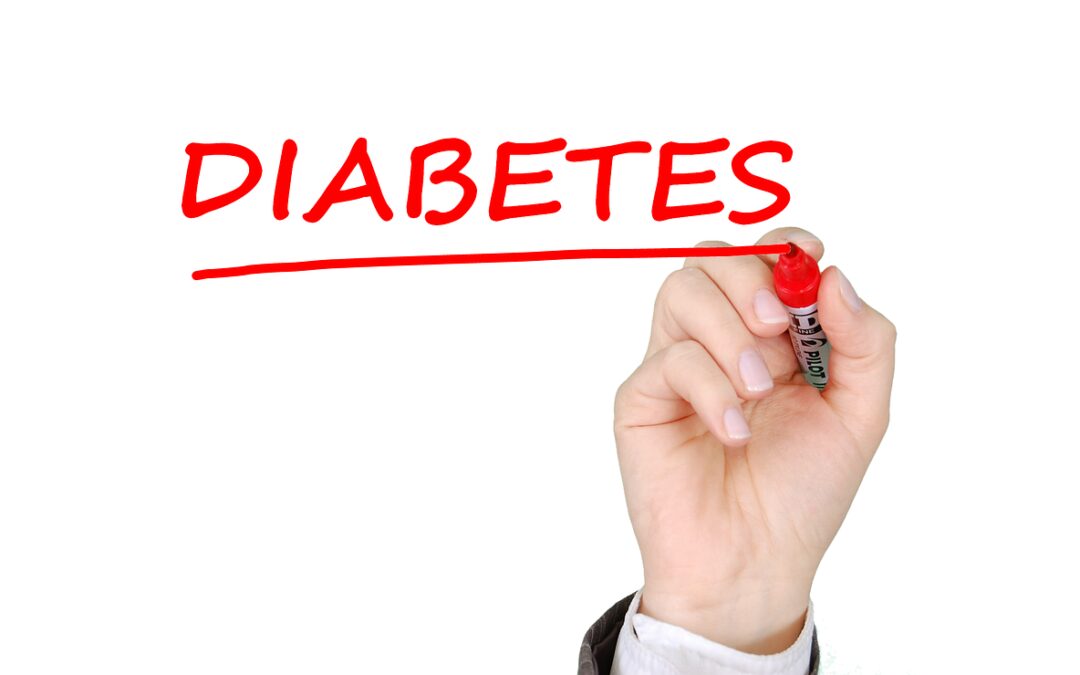
by I Dance With Diabetes | Aug 23, 2022 | Signs & Symptoms
Watch for these diabetes symptoms
With the continued rise in type 2 diabetes this article points out symptoms to watch for. The sooner you recognize diabetes symptoms the sooner you can begin to reverse the effects and minimize the long-term consequences.
Today, we are going to discuss the symptoms of diabetes and how they differ between men and women.
So first of all, what is diabetes? Diabetes is a disease in which your body can’t produce enough insulin as a result of which your body becomes resistant to its effects. The situation is worsened when your body either produces too little or becomes insensitive to the insulin that’s already there.
In diabetes, the levels of glucose in a person’s blood can easily go up. This can lead to serious complications if it is not controlled. The possible ramifications of uncontrolled diabetes are often serious and can include heart attacks, strokes, blindness, and fatigue, among many other things.
With diabetes, your glucose is getting high
Diabetes is a chronic condition that will typically lead to a number of complications, with cardiovascular disease and problems with your eyes, kidneys, and skin being the most common. Early symptoms of diabetes may go undetected because they are often mild.
Some of the earliest symptoms of diabetes for men can manifest as mild dry mouth, blurred vision, and difficulty concentrating. Men with diabetes may also experience a reduction in sexual performance due to a condition called erectile dysfunction.
Semen can be released into a bladder. Symptoms may include less semen being released during intercourse, as well as frequent urination.
People who suffer from diabetes often experience an increase in urination and the incidence of frequent bowel movements. This is because the body overproduces insulin, which lowers blood sugar levels. As a result, these people may also experience excessive thirst and hunger as well as blurred vision.

Most men experience broken sleep at night and may even experience bedwetting, which is another type of incontinence that the body tries to expel any excess glucose in the blood by means of urine. Frequent urination is another reason why it is so important to stay hydrated at all times, especially if you are experiencing insomnia.
If you are experiencing unexplained fatigue and listlessness, you may be a victim of diabetes. Generally feeling low-key and lethargic are the first symptoms of diabetes. You can get tested for this condition at any time by getting your blood sugar levels checked.
A glucose test is a vital tool for anyone who is experiencing unexplained weight loss, it will provide clarity on what’s going on and how to proceed. Men and women with diabetes can experience unexplained weight loss when their bodies cannot use blood sugar to transform it into energy.
Rapid weight loss can be a dangerous and unhealthy event, this is especially the case if you have lost weight for any reason. Losing weight too fast can lead to sudden and unexpected changes in your health and is not recommended. If you have recently lost a lot of weight, please consult with your physician about the safety of continuing your diet before trying it for yourself.
Skin infections are caused by high sugar levels in the blood. Men and women with diabetes are often victims of skin infections. This could be anything from genital itching to a serious case of thrush. The infections can be caused by the high sugar and it is a good breeding ground for fungus.
Those diagnosed with diabetes are at risk for many complications, one of which may be vision loss. This can occur in any age group, but men and other patients who develop diabetes later in life are especially at risk. It is important to be aware of the symptoms and warning signs that may indicate a need for urgent medical attention, such as blurred vision and general loss of eyesight.
The eyes are the first to be affected by elevated levels of the body’s glycemic index, which is harmful to most organs. If you have sudden drops in your eyesight or any other symptom of diabetes, seek treatment as soon as possible. Many of the symptoms of women with diabetes are the same as those of men.
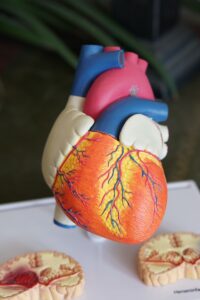
However, some symptoms of diabetes are unique to women, and understanding these symptoms can help you and your doctor identify the condition and get treatment as soon as possible.
There are symptoms that are unique to women, such as vaginal and oral yeast infections. vaginal yeast infections, oral yeast infections, and vaginal yeast infections can be caused by an overgrowth of yeast.
Women are more likely to get these types of infections. The vaginal area can be the site of an infection. Some common symptoms include itching, sore vaginal discharge, and painful sex.
Some symptoms
A white coat forms on the tongue and within the mouth from oral yeast infections. Women with diabetes have a higher risk of developing infections in the urinary tract because their blood sugar levels are too high.
When bacteria are in the urinary tract, there will be UTIs. These infections can cause a burning sensation in the urine and can lead to cloudy or bloody urine.
If the symptoms aren’t treated, there is a chance of a kidney infection. The immune system of women with diabetes is compromised because of hyperglycemia, which leads to women having urinary tract Infections.
Female sexual disorders. There is a condition called diabetic neuropathy that causes high blood sugar to damage nerve fiber. This can cause loss of feeling in a range of parts of the body, including hands, feet, and legs.
Polycystic ovary syndrome is a condition where a person has higher amounts of male hormones and is more likely to get it.
Signs of Polycystic Ovary Syndrome can include a wide variety of symptoms, with some common ones being irregular periods, weight gain, acne, depression, and difficulty getting pregnant.
It is possible that PCOS will cause elevated blood sugar levels and lead to the development of diabetes. Women with diabetes had mood changes and sometimes even depression, as well as bouts of anxiety.
Finally, unexplained weight changes are also a symptom of diabetes. Weight gain and weight loss without any clear cause can be an indication of diabetes as well.
Conclusion
Hope you found this article, Watch for these diabetes symptoms, helpful. If you enjoyed it then please follow our blog for more updates and information on diabetes.

by I Dance With Diabetes | Aug 23, 2022 | Signs & Symptoms
What the heck is glucose and why is it important to me?
One of the joys of getting to my age is I am on Medicare. I’m not sure if I can get out of Medicare, but that’s for another article. I find it interesting when I got into Medicare my doctor now sends me reminders to come in for my annual Medicare physical.
So I make my appointment and off I go. Of course, you have to do the fasting blood work. Why is it that when you have to fast for a blood test all you can think of is eating?
There are days I skip meals because I’m so busy I don’t have time to eat. I’m not that hungry then, strange. Back to the physical. Everything was good, well sort of, my glucose was 108. Not the worse, but it’s creeping higher over the years.
It’s a little harder to get up
I suspect most people as they start to age become more aware of physical problems. You wake up and it’s a little harder to get up. Your energy levels aren’t what they used to be. You can’t eat like a kid anymore. Going to the buffet isn’t the fun it use to be.
You go for a physical and the doctor says there are some things we need to talk about. All of these are points I’ve been running into over the last several years.
My doctor said the blood glucose level is something that needs to be watched. So I started to look more into what a glucose reading of 108 means. In many of the charts and articles, I’ve seen it saying I’m pre-diabetic.
Now, what does pre-diabetic mean? According to the Mayo Clinic, the food we eat enters our bloodstream as sugar. Your pancreas then releases insulin in your blood system to bring the sugar into your cells as an energy source. The bottom line it fuels your cells.
As your glucose level rises it’s an indication that the insulin isn’t working as well as it should. It’s like watching TV and seeing the same commercial over and over. You’ll your less likely to pay attention. When this starts to happen, your pancreas boosts the insulin to get the cell’s attention, hey take this stuff in. This is known as insulin resistance.
This is where problems begin, and it’s a slow process. Think of the frog that’s in a pot of water. You put the pot on a low flame and the frog doesn’t realize what’s happening until it’s too late. Your slowly rising glucose levels are something you probably can’t tell.
Insulin resistance conditions to watch for
Symptoms of insulin resistance are subtle. They include
· Feeling hunger
· Your feet and hands feeling numb and/or tingling
· Being thirsty
· Having more infections
· Sores take longer to heal
· Your vision becomes blurry
· Need to urinate more often
· Unexplained loss of weight
· Being tired

As your glucose levels rise, damage to your body’s systems begins to occur. Areas that are most susceptible in a prediabetes environment and become long-term points of damage have been linked to your heart, blood vessels, and kidneys.
Prediabetes is stressing these systems long before you are recognized with type 2 diabetes. You also become a candidate for silent/unrecognized heart attacks, sometimes also called silent heart attacks.
It seems that the rising glucose levels and insulin levels set off a cascade of effects on the systems of your body. Remember pancreas is working harder to put out more insulin because the cells aren’t taking in the glucose. Since cells aren’t getting enough energy, they must work harder.
Your body reacts to the rising glucose and insulin level by telling the kidneys to work to remove the glucose which increases the amount of urine which means a greater need to urinate. Your blood becomes thicker with higher levels of insulin and glucose. This causes irritation to the blood vessels, especially in the heart.
The irritation creates the opportunity for blood clots and the build-up of plaque. The irritated vessel walls become less flexible and rise in blood pressure. Areas of the body with small blood vessels and capillaries may begin to break because of pressure and rigidness.
This affects your eyes, brain, and kidneys. As you can see all of your body is affected. The cells aren’t getting enough energy to keep up with the demand, you become tired because the muscle aren’t able to get enough energy, and the body can’t remove the insulin and glucose so irritation rises, it goes on and on.
Is this a life sentence?
So is this a life sentence, are you doomed, no. You can reverse the effects with lifestyle changes. But you will have to be diligent for the rest of your life. The sooner you can make the changes the less damage will occur. Damage that has occurred most likely can’t be repaired, but you can eliminate future damage if you change.
What are changes that you can make? The following points describe things you can do to create a healthy lifestyle change.
Eat a healthy diet – Depending on when you discover you are prediabetic or type 2 diabetic will help define the urgency of making changes to your diet. If you are diagnosed as type 2 diabetic then you have high glucose levels and damage occurs. You should work with a qualified professional on creating a diet plan. If prediabetic a profession can certainly help, but common sense can go a long way to helping get you back to a normal glucose level. Either way, watch the carbs you eat. Move away from processed or packaged foods.

Be active – Being active means doing something. It doesn’t have to be extreme, but something you can enjoy. You need to wake up the body. Again depending on your health, follow your health care professional’s advice on levels of activity. Take a walk. Add to the distance over a period of time. You need to use the glucose in your system. Being active will wake up your body and mind.
Lose weight – If you can begin eating a healthy diet and being active you’re going to be on the way to losing weight. Cutting back on carbs and sugars will reduce the body’s need to store fat. Being active will require more energy than being a couch potato.
Maintain healthy blood pressure – Since prediabetes and type 2 diabetes are causing inflammation your cardiovascular system is being stressed. Lower blood pressure will help reduce the stress and limit additional damage.
Monitor your cholesterol – Prediabetes and type 2 diabetes have been shown to throw off your cholesterol balance. Your bad cholesterol gets higher, and the good cholesterol gets lower. Your triglycerides also climb in response. All this paints a picture of plaque build-up in your arteries.
Don’t smoke – enough said, don’t do it. Think of the money you’ll be able to save and be able to breathe better when you go for that walk to be active and lose weight😊.
Wrapping it up
Prediabetes and type 2 diabetes can be reversed. It will take effort to accomplish. All of this is a response to the lifestyle we have created. Much of what we eat today is manufactured so we want more of it, a subtle addiction to food. We’re eating more carbs and sugars today than we have ever eaten before. It is time to quit being sheep and demand healthy food products. It’s time to get away from our electronics and get out in the world. Take action, live healthily, and live longer. What the heck is glucose and why is it important to me, provides information on glucose and how it affects your body’s systems.
Please join our Facebook group and check out our other blog articles.
H/T: Mayo Clinic, WebMD

by I Dance With Diabetes | Aug 23, 2022 | Signs & Symptoms
Introduction: What is Prediabetes & How do you Know if you Have it?
I’m concerned I have prediabetes, something you would like to avoid. Prediabetes is a condition that falls in between the range of normal blood sugar levels and those which are high enough to be diagnosed as diabetes. Prediabetes can be caused by a variety of factors, such as being overweight or inactive, having an unhealthy diet, or simply getting older. Prediabetes is a silent killer because it does not have any symptoms at the early stages. It is important for people to know about this condition and get tested for it before it turns into type 2 diabetes which can lead to some serious complications like heart diseases and kidney failure.
There are two types of diabetes:
Type 1 – Your body doesn’t produce enough insulin
Type 2 – Your body can’t use the insulin it produces properly
The American Diabetes Association (ADA) has created a set of guidelines for those people with prediabetes. They recommend that people with prediabetes get their blood sugar levels checked every 3-6 months to track the progress of their health, it can only be detected through regular blood tests for fasting plasma glucose or HbA1c. The ADA also recommends that people with prediabetes make lifestyle changes to lower their risk of developing type 2 diabetes and cardiovascular disease.
Prediabetes is becoming more and more common in the world, with up to 86% of adults over the age of 50 having it. The condition prediabetes often goes unnoticed but can lead to diabetes and other serious health risks if left untreated. It’s important to get regular checkups and keep track of your blood glucose levels rather than dismiss the symptoms.

The symptoms of prediabetes can be mild or severe and they can vary from person to person. The most common symptoms of prediabetes include increased thirst and hunger, weight loss or gain without trying, increased urination, blurred vision, tingling in the extremities (hands and feet), dry mouth, and fatigue.
Additional risk factors for developing prediabetes:
• BMI greater than 27
• Family history of diabetes
• Sedentary lifestyle
• 45 years of age or older
• Carrying weight in your abdomen
• Previous diagnosis of gestational diabetes
How to Prevent Prediabetes from Getting Worse and Becoming Diabetes
In order to prevent prediabetes from becoming diabetes, one should make lifestyle changes with the help of a doctor. One can also take medication for prediabetes and eat a healthy diet. The United States Food and Drug Administration lists the following medications for prediabetes: metformin, acarbose, and miglitol. They are all taken two or three times a day with meals, usually in the morning before breakfast, at midday before lunch, and at night before dinner.
Prediabetes and type 2 diabetes is a lifestyle-related disease that can be prevented by changes to one’s diet, weight management, and exercise. The American Diabetes Association also states that maintaining a healthy weight is one of the most important things a person can do for their health.
The best way to reverse prediabetes is by eating healthy and exercising regularly – without these two things, you will never be able to shake the risk of having diabetes. Eating a balanced diet, and working out with moderate intensity for 30 minutes or more per day is the key to avoiding diabetes.
You are what you eat
What do you eat? Are you eating fresh foods or processed foods? High and processed foods can lead to your prediabetic condition. Watch your caloric intake. It is suggested for women start with 1400 to 1600 calories daily. Men you get to start at 2000 to 2200 calories daily. It has been shown that eating earlier in the day gives your body time to process and use the blood sugar when you are more likely to be active. If you feel the need for snacks go for something high in fiber, Some healthy snacks are:
- Hard-boiled eggs
- Almonds
- Avocado
- Beef sticks
- Turkey strips
- Whole grain chips and cheese
- Air-popped popcorn
- Nuts, seeds, and dried fruit
- peanut butter, whey protein, and oat flour bars
- Berries
- Hummus and your favorite veggie
- Apples and peanut butter
- Chickpeas
- Cottage cheese
- Tuna salad
- Black bean salad
- Celery with peanut butter

Keys to remember
A key part of controlling blood sugar levels and therefore preventing the onset of prediabetes is exercise. Exercise is a great way to improve insulin sensitivity, burn off excess glycogen, increase muscle mass and maintain a healthy weight. The lifestyle management of diabetes is not just about what you eat.
Physical activity is an important part of a healthy lifestyle. The best form of exercise for managing type 2 diabetes is a combination of aerobic exercise and strength training. It’s important that you aim for 150 minutes per week of moderate-intensity activity. You can count on a variety of activities to help you reach your goal.
In addition to brisk walking, there are examples of moderately intense exercise, such as dancing, cutting the grass, swimming, biking, and cleaning the house, as reported by the Centers for Disease Control and Prevention. One of the most important things when it comes to exercise is finding a routine that you enjoy, which makes it easier to stick with. By doing activities that you love, there will be an increased interest in getting up and moving. This leads to people being more motivated and more likely to work out regularly.
Conclusion:
I’m concerned I have prediabetes, was meant to provide you with information. Since there is no way of knowing if you are becoming or are prediabetic without checking in with your doctor, ideally a yearly physical is the first step towards keeping track of your health and preventing possible complications.
If you have been experiencing any of the symptoms that are mentioned in this article, then it is important to consult your doctor and develop a plan to monitor your glucose levels or A1c. For example, some people with type 1 diabetes may need to check their glucose levels three times a day while others with type 2 diabetes may only need to measure once a week. As you start to notice the symptoms, be proactive and examine the following lifestyle factors; healthy fats, protein, and carbohydrates.
Please join our Facebook group and check out our other blog articles.
Read more: WebMD
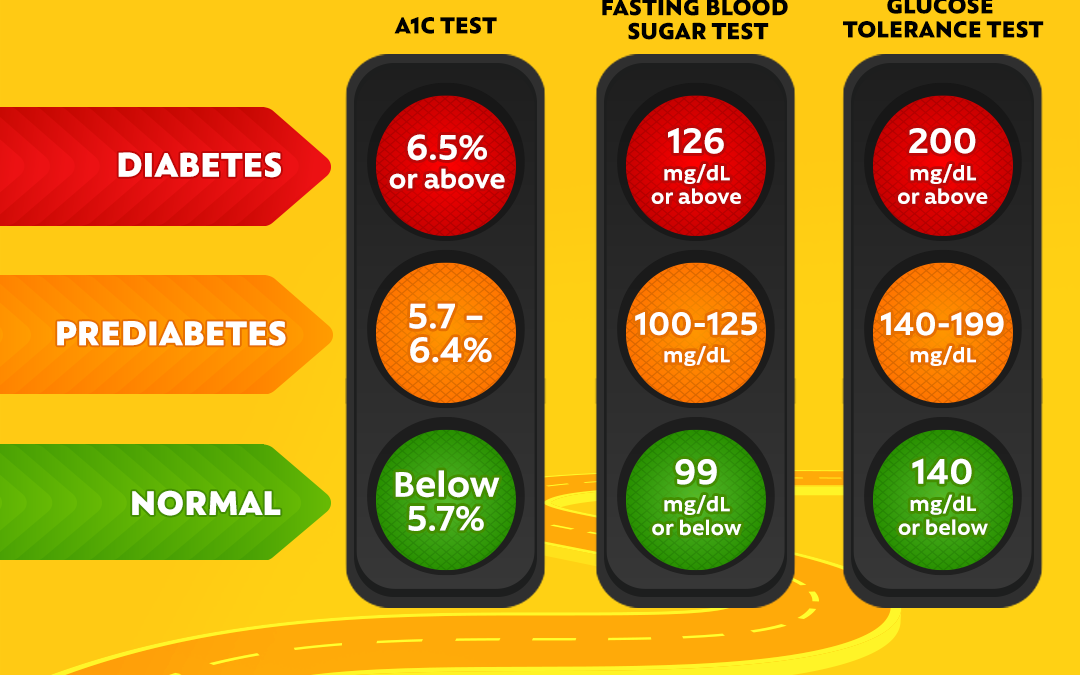
by I Dance With Diabetes | Aug 23, 2022 | Signs & Symptoms
Earlier you recognize these warning symptoms, the earlier you will be able get in control
Many people have type 2 diabetes for years before their early symptoms can be spotted and many don’t even realize they are at risk. The earlier type 2 diabetes is detected, the better chance a person has to manage the disease.
More than 4.9 million people in the UK have diabetes and it is estimated that there are thousands of cases that are not yet diagnosed. The NHS has now made it much easier to do a self-test with your doctor to find out if you have diabetes or another type of condition that means you need medication, such as high blood pressure, kidney problems, or heart disease.
Type 2 diabetes is far more common than type 1 and accounts for around 90% of all adult cases in the UK, while only 8%, according to Diabetes UK, have type 1. Type 2 diabetes is characterized by a resistance to insulin and affects the way that the body processes glucose.
More than 6 million people are at increased risk of developing type 2 diabetes, and more than 750,000 people are currently living with the condition but are not aware of it.
Research has shown that one of the most effective ways to reduce your risk of developing Type 2 Diabetes is by making some lifestyle changes. These changes may include diets, exercise, and weight loss to help reduce your risk by as much as 50%.
EARLY DIAGNOSIS IS KEY
Health professionals emphasize early diagnosis is key as the early stages of this disease often span five or maybe six years before symptoms become noticeable. This is why it’s so important to be aware of the indicators to detect type 2 diabetes as soon as possible and take the necessary steps to prevent any complications.
Type 2 diabetes is a lifelong condition that is typically caused when insulin isn’t produced in balance with the body’s needs and can often be linked to being overweight, being too sedentary, or having a family history of type 2 diabetes. Type 2 diabetes can cause health complications like increased blood sugar levels, cardiovascular disease, kidney damage, nerve damage, and blindness
It can cause the level of glucose in the blood to become too high and this can lead to a variety of serious health conditions, including heart disease or a stroke.
A variety of lifestyle adjustments and medical interventions are required for people with Diabetes to live a long and healthy life. In order to maintain balanced blood sugar levels, people who have diabetes should exercise, eat healthily, and have their blood tests checked regularly. The lifelong nature of diabetes also often requires people who have type 1 diabetes to take insulin injections on a regular basis.
As type 2 diabetes is a gradually developing condition, medicine, at some point in time, may be required and this will normally be in the form of tablets or injections.
If you are a person with this condition, you are more at risk of developing it. The earlier you recognize these warning symptoms, the earlier you will be able get in control. You should monitor the following points:
– people are over 40 or 25 for south Asian people.
– A close relative of a parent, brother. or another family member with diabetes who may be able to provide this information.
– if your weight is higher than the prescribed weight for your build and size.
– if you are or your family comes from any of these locations of Asian, African of the Caribbean, or black African origin
You can find out your risk for type 2 diabetes by answering a few questions from your health provider. You can get help with your Diabetes Prevention program if your risk score is dependent on it.
BE SMART AND GET CHECKED
Many people, even those who are not diabetic and do not know they currently have the condition, are unaware that they have been diagnosed with diabetes because it can exist with no symptoms which makes it difficult to spot.

However, it is important to keep in mind a few key symptoms that may indicate the condition. The main symptoms of ovulation, according to the NHS, include:
– going to the washroom more than usual, particularly at night
– feeling thirsty all through the day
– feeling very tiring.
– your weight is dropping and you’re not trying to lose weight
– itching around the penis or vagina or symptoms of thrush.
– healing time for wounds is longer than normal
– your vision begins to degrade
Type 1 diabetes, often referred to as “juvenile diabetes” can develop quickly over weeks and is typically diagnosed around the time of puberty.
Both type 1 and type 2 diabetes can be diagnosed by means of either a blood or urine test.
If you have been diagnosed with Type 1 Diabetes, a diabetes nurse will be able to show you how to manage the condition in your day-to-day life, including learning how to test your blood glucose and inject insulin.
CHANGING LIFESTYLE IS KEY
Your doctor should discuss other lifestyle factors, such as alcohol consumption and smoking, in addition to your diet and exercise habits. They will also determine whether you might need to take medications.
Most people diagnosed with diabetes need to take medicine to control blood sugar levels and get close to normal. In those with type 1 diabetes, insulin must be taken every day for the same purpose.
Some types of diabetes medications can lead to a condition known as hypoglycemia or low blood sugar. This happens when blood sugar levels drop below a certain level, when this happens, your doctor should ask you to check your blood sugar by taking regular tests with a glucose monitoring device.
If you have frequent or severe hypos where you usually take the blood test twice a day, you could be offered a continuous glucose monitor or flash monitor which would be worn on your skin and allow you to check your blood sugars at any time.
A healthy diet of around 2.5 hours of physical activity each week can help with blood sugar levels. Fruit, vegetables, and pasta are high in sugar, fat, and salt, so the National Health Service recommends not eating any of them.
There is mounting evidence that a low-calorie diet (800 to 1,200 calories a day) can be used as an effective treatment for type 2 diabetes. Some people have even gone into remission by following this low-calorie diet for around 12 weeks at a time. Remember, the earlier you recognize these warning symptoms, the earlier you will be able get in control.
Please join our Facebook group and check out our other blog articles.
H/T: @NationalWorld

by I Dance With Diabetes | Aug 23, 2022 | Signs & Symptoms
Diabetes resources and reviews
Do you have diabetes or have concerns about getting diabetes? The sooner you can become knowledgeable about your condition, the better you’ll be. Having knowledge can help calm your fears and concerns. Do you understand what type of diabetes you have or are you prediabetic? In this article, we point out various resources that are available to you. Take the time to review each point and then decide what is the best choice for you.
Traditional support
The first place to start is your doctor. Don’t be afraid to ask questions. Asking questions can help give you confidence in the doctor. Did they spend time with you and explain your condition? Did they tell you about or provide a list of other professionals? Or did they come in, sit down tell you their findings, and give you a prescription? It may sound funny, but I have seen articles, and Facebook posts, and heard stories of doctors running and spending 10 minutes with the patient and then running out. That doesn’t sound like a confidence builder to me.
Other supporting professionals are:
· An endocrinologist
· An ophthalmologist
· A pharmacist
· A registered dietitian
· A diabetes educator
For a description of the above professionals click the link.

Google as a resource
It’s been said you can find just about anything on Google. There is no shortage of diabetes information on Google. For example typing in “What is type 2 diabetes” will list many sources of reference. You’ll see links from the Mayo Clinic, American Diabetes Association, Centers for Disease Control and Prevention, along with many other sites.
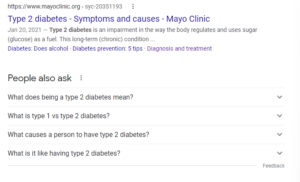
Another helpful feature is the “People also ask” section. This is typically found after the first site is listed. Another place to look for information is at the bottom of the Google search page. You will find a list of other questions or concerns people were asking that are related to your question.
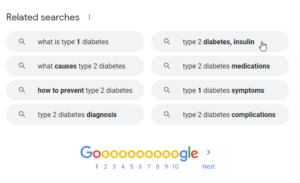
Facebook groups and pages

Facebook is another place to check out for support on diabetes. This may not be the clinical support you get from a doctor or a Google search to the Mayo Clinic, but you will find what people are asking or commenting about related to diabetes. I would suggest following a group over a page. Groups tend to be monitored for the correctness and civil behavior. An easy way to find a Facebook group for the topic you’re looking for is to search for keywords. For example, if I enter, “type 2 diabetes”, in the search box it will display groups created for that purpose. The following is a list of Facebook groups that you may want to check out. I’ve copied the “About” description from the groups, in italics, under each group name. Any comment I added is not in italics.
Winning Type 2 Diabetes Together
Everyone suffering from high or erratic cholesterol levels or type 2 diabetes is welcome to join Winning Type 2 Diabetes Together. It’s the best place to get support and information, whether you have been with the condition for years or have recently been diagnosed.
A safe and transparent community is Winning Type 2 Diabetes Together. You can help others, start or join discussions with people dealing with the same challenges as you and make friends with other people who share similar challenges.
Reversing Type 2 Diabetes
This group involves information and discussions about reversing the symptoms of diabetes type 2.
Posts in this group tend to center around people’s glucose and A1c readings. People share their methods of dealing with their readings; what and when they eat, and adjustment to meds.
Diabetes Type 2 Support Group
For those who have Type 2, or know someone who has Type 2 Diabetes. If you have questions, or even if you need some help, you can get it here.
A little bit of a smaller group, but it is growing. In addition to people’s stories of dealing with diabetes, you will find many references to information on dealing with various diabetes conditions and resources.
Type 2 Diabetic Recipes
There is a support group for people who have a family member or friend with type 1 or type 2 diabetes.
*Get a free download here: https://aw179950.aweb.page/Type2diabetes2020
Daily Diabetic Recipes.
This is a place where we can share the ups and downs of diabetes and where we can offer support.
A good place to come for recipes.
Type 2 diabetes
A MAJOR CAUSE of Type 2 Diabetes is excess carbohydrate toxicity. This drives our disease by causing more INFLAMMATION and there are other contributing factors such as excess fructose, processed plant oils, manufactured food products, medications, toxins, etc… We can feel so alone with this disease! Let’s support each other. Come share your positive experiences with us.
Diabetic Friendly Recipes
For people who are on a low carb low sugar diet.
The title says it all. You have to eat something so here’s one place you can find recipes to try.
Dancing with Diabetes
This group is dedicated to helping people who are pre-diabetic or Type II diabetic. We call this group Dancing with Diabetes because so many people have the problem but aren’t close to a solution. We will help you get there.
This is our group. Of course, we have to toot our horns a bit😊. We’re small, but do our best the provide you with information and resources to understand diabetes and find a positive mindset in dealing with diabetes.
This is a short list of Facebook groups you can join to find information on diabetes. Remember when joining groups you may be asked questions about why you are joining. Also, many groups will ask you to agree to the rules of the group. This is just one way the admins can manage the members of the group and keep everyone in line. As time goes on we will add and review more groups.
One more resource to check out is our Diabetes card deck. It is designed to help you change your mindset from “Oh no, I have diabetes, to, I won’t be beaten by diabetes. I can live a joyful life with diabetes.” To find out more click on this link.
Conclusion
The challenge to understanding diabetes is good resources. You will have to do your research to get answers. The nature of diabetes is very individual. What works for one will work differently for another. Do your research, try different solutions, and adjust based on your results. It bears repeating again, do all of this in concert with your medical professional. You don’t have to do it yourself. Be in the community with others and share your stories.
This article, Diabetes resources and reviews are an important resource for your review and use.
Please join our Facebook group and check out our other blog articles.
Read more: ADA


























